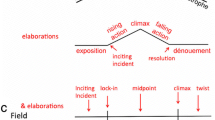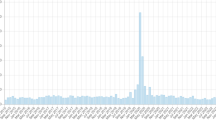Abstract
This hypermedial project deals with a historical and conceptual approach to physics. The “core” of the project is a certain number of “case studies”, namely problems or phenomena recounted together with their different interpretations. All case studies present two levels of investigation: the first level is devoted to high school students, the second level is devoted to university students and high school teachers. Our project is directed at a new and better understanding and appreciation of scientific culture.
Our methodology is a historical methodology: teaching physics and the history of physics are fellow-subjects. We are not interested in adding the history of physics to teaching physics, as an optional subject: the history of physics is “inside” physics.
Since textbooks usually give one and only one explanation of each physical phenomenon – the “true” explanation – we would like, on the contrary, to present the phenomena together with different interpretations that factually occurred in the history of physics. We offer four different approaches to the subject of the case study: “A. Phenomena”, “B. Textbooks”, “C. History” and “D. Maps”.
The basic unit of the hypermedia is the presentation , namely a coherent set of information endowed with a definite and complete meaning. From the media point of view, a presentation consists of pictures and/or animations, key-words and/or key-sentences and a speaker explanation. Each approach consists of a certain number of “presentations”.
Similar content being viewed by others
REFERENCES
Primary sources
Einstein, A.: 1905, ‘Zur Elektrodynamik bewegter Korper’, Ann. Phys. 17, 891–921, engl. transl. in The principle of relativity, Dover, New York, 1952, p. 35.
Einstein, A.: 1920, ‘Äther und Relativitätstheorie’, lecture at Leiden University.
Faraday, M.: 1852, ‘Phisical lines of magnetic forces’, Proc. of R. Ins.
Faraday, M.: 1846, ‘Thoughts on ray-vibration’, Phil. Mag., 28, 315.
Lorentz, H.A.: 1886, ‘De l'influence du mouvement de la terre sur les phénomenes lumineux’, Versl. Kon. Akad. Wetensch. Amsterda, 2, p. 297, repr. in Lorentz, H.A., Collected Paper, The Hague, Nijhoff, 1935 1939, 4, 153.
Lorentz, H.A. [a]: 1892, ‘La théorie électromagnétique de Maxwell et son application aux corps mouvants’, Arch. Néer, 25, 363; repr. in Lorentz, H.A., Collected Papers, Nijhoff, The Hague, 1935–1939, 2, 164.
Lorentz, H.A. [b]: 1892, ‘The relative motion of the earth and the ether’, Versl. Kon. Akad. Wetensch. Amsterda, 1, 74; repr. in Lorentz, H.A., Collected Papers, 4, 219.
Lorentz, H.A.: 1895, Versuch einer Theorie der elektrischen und optischen Erscheinungen in bewegten Körpern. Brill, Leiden; repr. in Collected Papers, 5. p. 1; partially engl. transl. in Principle of relativity, Dover, New York, 1952.
Lorentz, H.A.: 1899, ‘Théorie simplifiée des Phénomenes olectriques et optiques dans des corps en mouvement’, Versl. Kon. Akad. Wetensch. Amsterdam, 7, 507; repr. in Collected Papers, 4, 245; engl. transl. in Schaffiter, K.F., Nineteenth-century aether theories, Pergamon Press, 1972, p. 255.
Lorentz, H.A.: 1904, ‘Remarque au sujet d'induction unipolaire’, Arch. Neer., 9, 380; in Lorentz, H.A., Collected Papers 3, pp. 177–179.
Lorentz, H.A.: 1904, ‘Electromagnetic phenomena in a system moving with any velocity less then that of light’, Proc. R. Acad. Amsterdam, 6, 809; repr. in Collected Papers, 5, 172; in The principle of relativity, Dover, New York, 1952, p. 11.
Maxwell, J.C.: 1857, ‘On Faraday's lines of force’, Phil. Trans. Camb. Soc., 10, part 1.
Maxwell, J.C.: ‘On physical lines of force’, I°) Phil. Mag., S.4, 21, 1861, p. 161, II°) Phil. Mag., 1861, p. 281, p. 338, III°) Phil. Mag., 12, 1862. IV°) Phil. Mag., 85, 1862.
Maxwell, J.C.: 1865, ‘A dynamical theory of the electromagnetic field’, Phil. Trans. Roy. Soc., 155, 459.
Maxwell, J.C.: 1868, ‘On a method of making a direct comparison of electrostatic with electromagnetic force; with a note on the electromagnetic theory of light’, Phil Trans. Roy. Soc., 158, 643.
Maxwell, J.C.: 1893, ‘Ether’, in Encyclopaedia Britannica, 9th edn., VIII, 572.
Maxwell, J.C.: 1873, Treatise on electricity and magnetism, Oxford University Press, 2 vols.; repr. Dover, 1954.
Secondary sources
Becker, R. & Sauter, F.: 1964, Electromagnetic fields and interactions, Blaisdell, II° vol.
Bevilacqua, F.: 1983, The Principle of Conservation of Energy and the History of Classical Electromagnetic Theory, La Goliardic Pavese.
Buchdahl, G.: 1993, ‘Styles of Scientific Thinking’, Science & Education 2.
Everitt, C. W. F.: 1974, ‘Maxwell, J.C.’, in Dictionary of Scientific Biography, vol. 9.
Feynman, Leighton, & Sands: 1975, The Feynman Lectures on Physics, Inter European Editions, vol II, part I.
Holton, G.: 1973, Thematic Origins of Scientific Thought: Kepler to Einstein, Harvard University Press.
Holton, G.: 1977, The Scientific Imagination: Case Studies, Cambridge University Press.
Jackson, J.D.: 1975, Classical Electrodynamics, Wiley.
Kuhn, T. S.: 1977, Essential Tension, The University of Chicago Press, Chicago.
Miller, A.I.: 1981, Albert Einstein's Special Theory of Relativity, Addison-Wesley.
Miller, A.I.: 1981, ‘Unipolar Induction: a Case Study of the Interaction between Science and Technology’, Annals of Science, 38, 155–189.
Norsessian, N.J.: 1984, Faraday to Einstein: Constructing Meaning in Scientific Theories, Martinus Nijhoff Publishers.
Panofsky, W.K.H. & Phillips, M.: 1961, Classical Electricity and Magnetism, Addison-Wesley.
Scanlon, P.J., Henriksen, R.N., & Allen, J.R.: 1969 ‘Approaches to Electromagnetic Induction’, Am. J. Phys. 37(7).
Zahar, E.: 1989, Einstein's Revolution — A Study in Heuristic, Open Court.
Author information
Authors and Affiliations
Rights and permissions
About this article
Cite this article
Bevilacqua, F., Bordoni, S. New Contents for New Media: Pavia Project Physics. Science & Education 7, 451–469 (1998). https://doi.org/10.1023/A:1008663106429
Issue Date:
DOI: https://doi.org/10.1023/A:1008663106429




